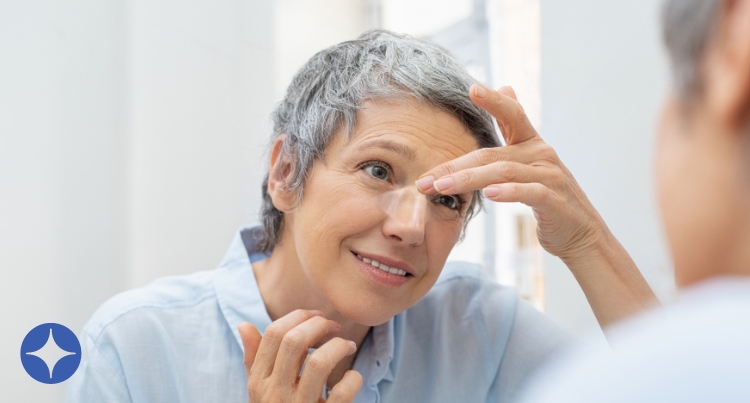
Pictured: Reduce painful friction with LiquiCell® skin protectors that allow sleep equipment to glide over the skin.
Sleep therapy can be a game-changer for those dealing with a sleep disorder, but adjusting to sleep equipment can sometimes be challenging. Thankfully, there are several strategies to improve your comfort and ensure you get the restful night's sleep you deserve.
The following are some practical tips to enhance your experience.
Use a Humidifier Chamber
One common issue with sleep equipment is waking up with a dry throat. In this scenario, a humidifier chamber can be a lifesaver 1. It adds moisture to the air, which can prevent the dryness that often accompanies the use of sleep equipment. This simple addition can make a significant difference in your comfort levels and overall therapy effectiveness.
Opt for a Special Pillow
Managing sleep equipment overnight can be cumbersome and uncomfortable, potentially negatively impacting the quality of your rest. To combat this, a pillow specifically designed for use with sleep equipment, such as The Ultimate Sleep Equipment Pillow by Core, can help keep tubing out of the way. This specialized pillow not only provides the necessary neck and head support but also has cutouts to accommodate the tubing, reducing tangles and discomfort.
Prevent Chafing with Liners or LiquiCell
Chafing and irritation from where the equipment rests on your skin are common complaints. If this is an issue, consider using a liner or LiquiCell. These products create a barrier between your skin and the equipment, reducing friction and preventing sore spots. Moreover, the additional layer of cushioning can make wearing the equipment more comfortable and less intrusive, allowing you to sleep better.
A Sleeve to Prevent Rainout
If you've ever experienced rainout, where condensation forms inside the sleep equipment, you know how disruptive it can be. A sleeve can help mitigate this issue by insulating the tubing, keeping the air at a consistent temperature and reducing condensation. This simple addition can prevent the unpleasant experience of water dripping into your face during the night.
Utilize the Ramp Feature
Many sleep therapy devices come with a ramp feature, which gradually increases the air pressure as you fall asleep. Starting at a lower pressure can make it easier to fall asleep 2 and then gently increase to the prescribed pressure once you're in a deeper sleep. This feature can be particularly useful for those who find it difficult to adjust to high air pressure levels right away.
Ensure Proper Head Strap Fit
The fit of your head strap is crucial for comfort and effectiveness. A strap that is too tight can cause discomfort, while one that is too loose can result in air leaks 3. Additionally, if applicable, trimming facial hair can help ensure a better fit and seal. Regularly checking and adjusting the fit can prevent many common issues associated with sleep equipment.
Clean Your Equipment Regularly
Keeping your sleep equipment clean is essential for both comfort and hygiene 4. Regular cleaning can prevent foul odors and reduce the risk of infections. Using a product like SoClean 3 Complete can supplement this process, ensuring your equipment is fresh and ready to use every night.
Consult Your Provider
If you continue to experience discomfort, don't hesitate to talk to your healthcare provider. They can help you explore different equipment options or adjust your treatment settings to better suit your needs. Sometimes, a small change in the type of equipment or the therapy settings can make a significant difference in your comfort and therapy effectiveness!
By implementing these tips, you can enhance your comfort and improve your overall sleep therapy experience. A few small adjustments can lead to better sleep and, ultimately, better health.
References
- Harvard Health, "I can't tolerate CPAP, what can I do?" https://www.health.harvard.edu/blog/i-cant-tolerate-cpap-what-can-i-do-2020072920672
- Mayo Clinic, "CPAP machines: Tips for avoiding 10 common problems" https://www.mayoclinic.org/diseases-conditions/sleep-apnea/in-depth/cpap/art-20044164
- org, "Troubleshooting CPAP Problems" https://www.sleepapnea.org/cpap/troubleshooting-cpap-problems/
- FDA, "CPAP Machine Cleaning: Ozone, UV Light Products Are Not FDA Approved" https://www.fda.gov/consumers/consumer-updates/cpap-machine-cleaning-ozone-uv-light-products-are-not-fda-approved




